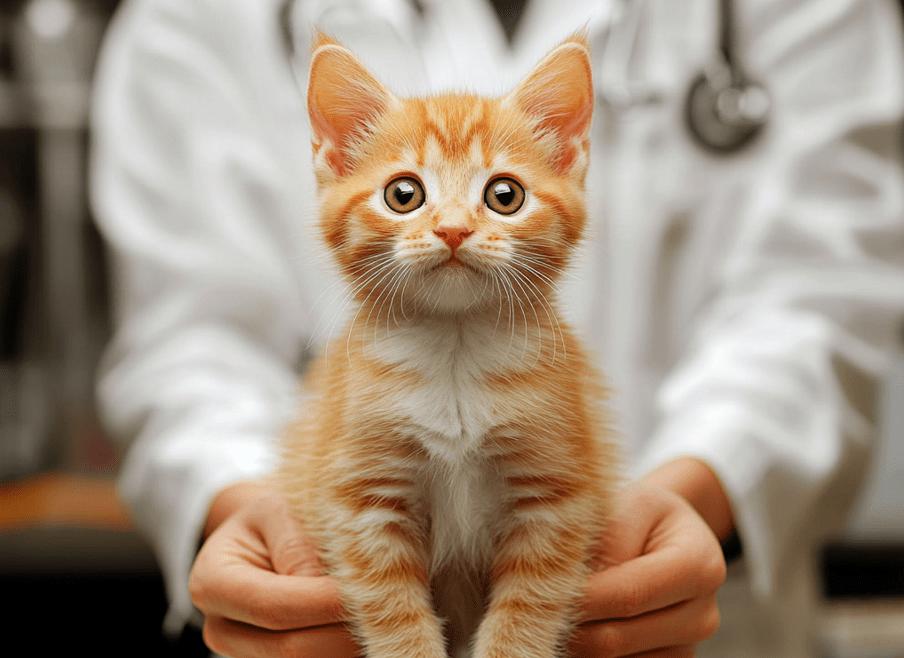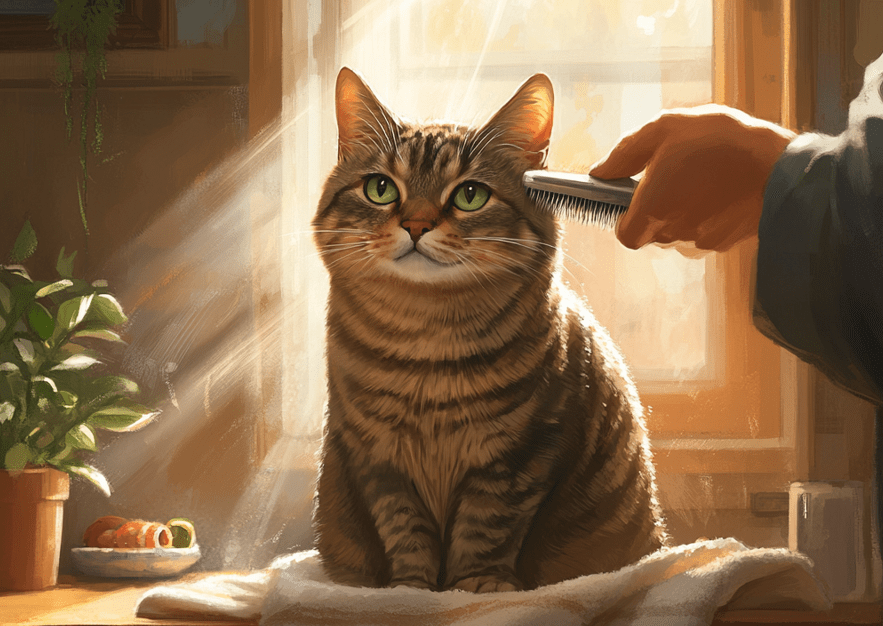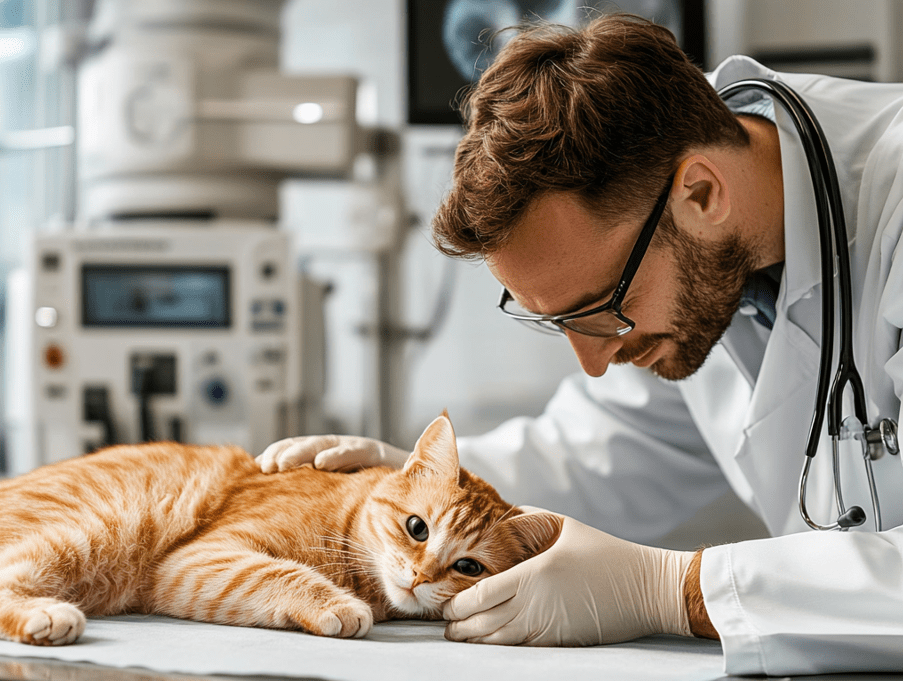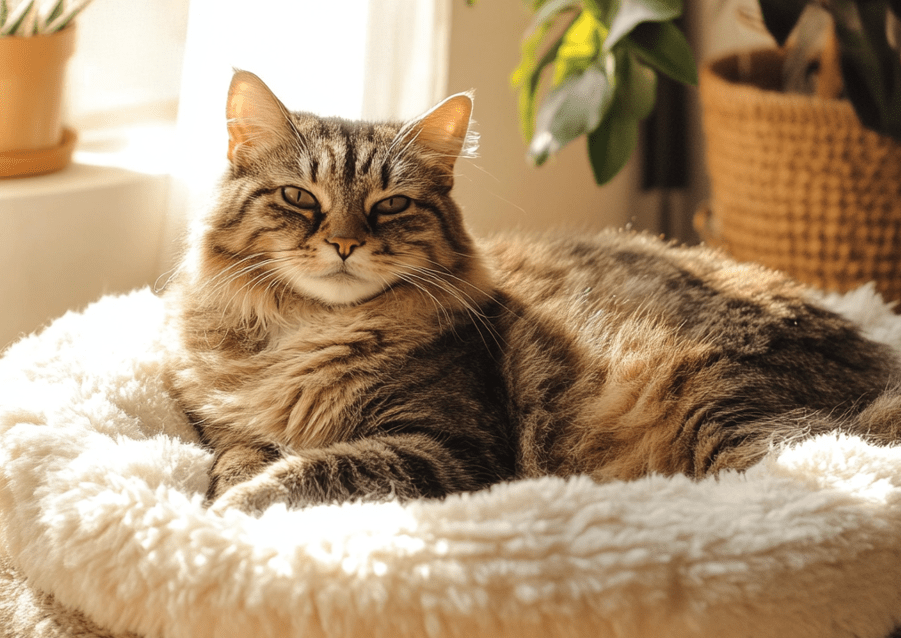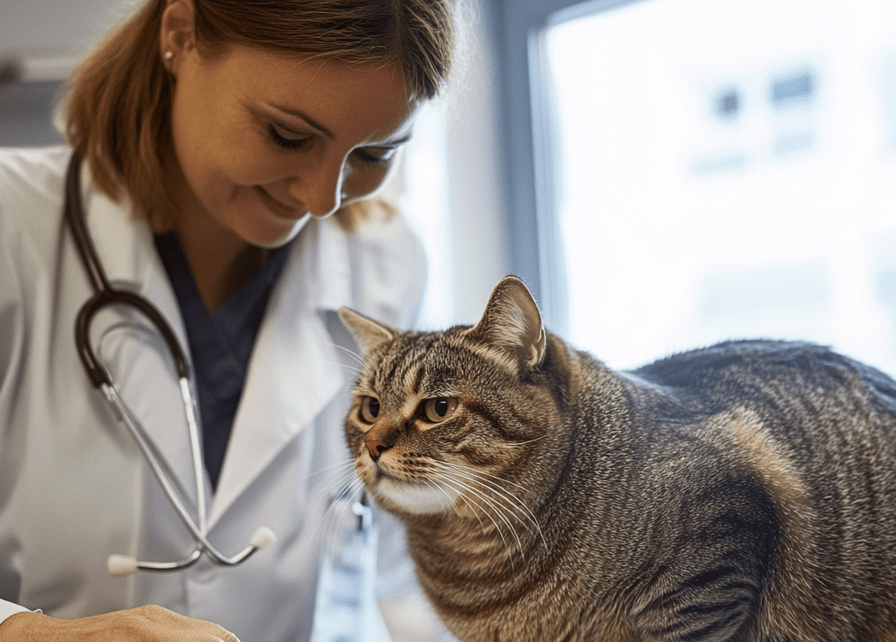
Managing Cat weight is a crucially important task for every cat owner to ensure the healthy lifestyle of their cat. Being a responsible cat owner, you must make certain that your cat is carrying a healthy weight. Overweight in cats is not a rare path, however, most of the time it remains undiagnosed by the owner until it manifests the disease. Appropriate weight control helps to enhance a quality of life and decrease the occurrence of many dangerous diseases which are the main causes of death in cats. In this article, we will discuss what leads to obesity in cats, how to determine if your cat is overweight, and steps you can take that will prevent and/or reverse the situation.
To watch the summary of this article, just watch this video-
Understanding Cat Obesity
Feline obesity is defined as the state where cats become overweight because their fat reserve is higher than the amount of fat that must be metabolized daily. The leading two causes are Obesity and Overeating, Other factors include hereditary, other diseases, and illnesses that affect the body’s metabolism process. Veterinary recommendations suggest that a healthy cat should have a score of 1 to 3 out of 9 and a cat that is obese will score 8 or 9 out of 9.
Feline obesity is no longer the cat’s cosmetic problem; it is a medical condition with potential health risks. In obesity, the general health condition of the cat becomes compromised and conditions such as diabetes, arthritis, heart disease, and respiratory conditions are more likely to occur. They may equally also be immobile – which is a very big toll on their life quality. Most concerning is the impact on their lifespan: as research has found out, gaining more weight is also not healthy for cats and these overweight cats are known to have shorter lifespans than skinny cats.
Assessing Your Cat’s Weight
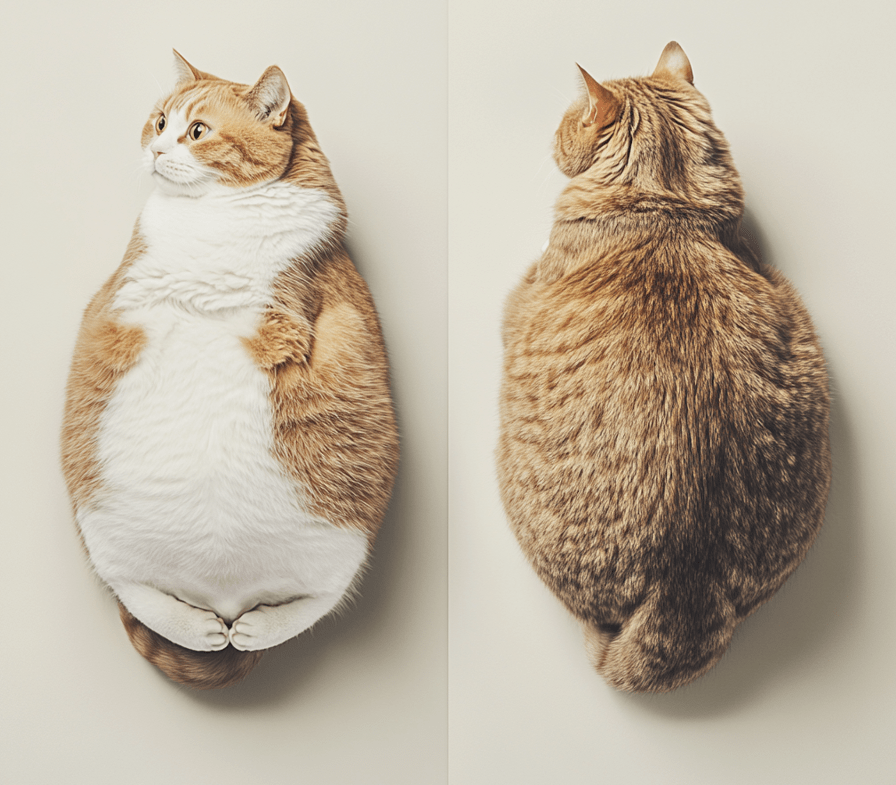
Before successfully controlling the weight of your cat it is important to decide whether your cat is in fact, overweight. To measure body fat, veterinarians utilize the Body Condition Score system when evaluating a cat’s body. The BCS system ranges from 1 to 9, where 1 indicates the cat is underweight, and 9 means the cat is severely obese. Ideal weight correlates with a BCS of 4-5, in which case an observer can palpate the ribs without making efforts through excessive layers of fat and can visually distinguish a cant’s waste when the animal is viewed from overhead.
To determine the weight of your cat, you will need to perform a basic body check by touch and sight at home. Lightly slide your hands down their side and at the back to try to find the ribs and spine. This means if you can touch your cat’s bones without much difficulty without being able to see them externally then your cat is probably at a good weight. Ideally, if you viewed your cat from above there should be this hourglass shape and the belly of the cat should appear slightly concave behind the ribs.
If you think your cat is or has become overweight or obese, it is high time to call the vet. Your vet can then give a diagnosis and guide you toward creating the right weight for a cat.
Developing a Weight Loss Program
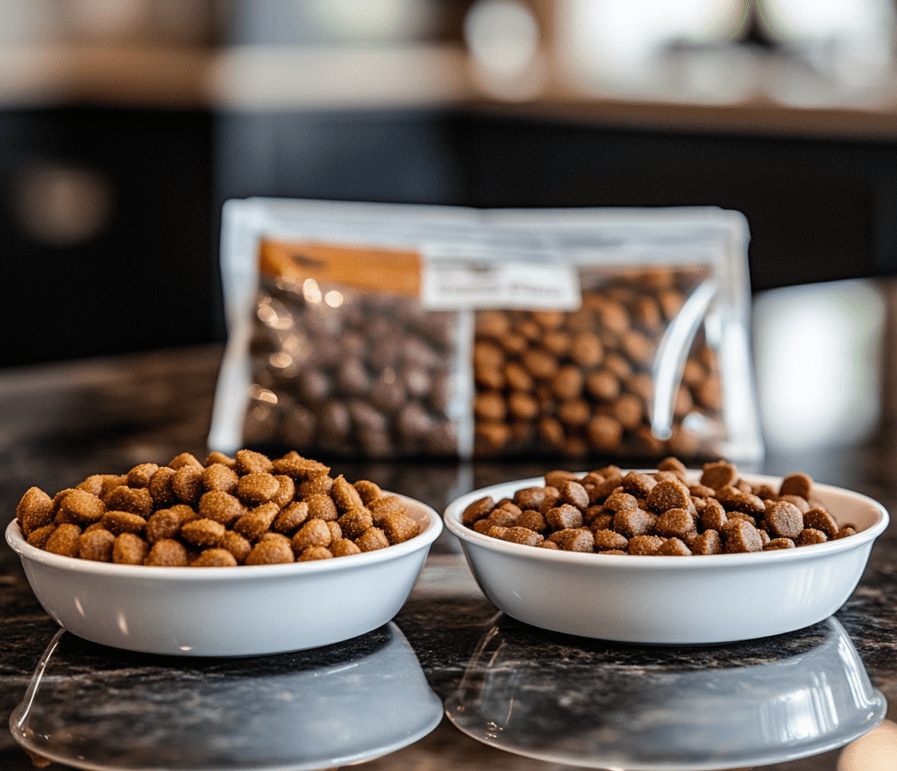
Having concluded that your cat is overweight, the next thing is to come up with a weight loss program. This plan should focus on two key areas: diet and exercise.
Balanced Diet
That is probably why calorie-controlled diets are necessary for weight loss. First of all, you have to find out how many calories are necessary for a cat’s daily need to keep its weight the same. Your vet will be able to provide the correct estimates of the number of calories based on the cat’s age, breed, activity level, and state of health. Once this number is identified, try to consume fewer calories than the identified number, preferably by taking relatively small portions of food or taking foods with relatively low calories.
When choosing food, you have two main options: wet food and dry food. Both are fine for weight issues but wet food often contains less food energy and more water thereby satisfying the cat’s hunger for longer. If you utilize dry food, it is recommended that the portion should be well-measured so that your pet does not overeat. Don’t consume many calories and always check the food labels.
Sweet dishes are also an inalienable component of the relationship between you and your favorite pet, but you should remember that it is possible to spend only а limited amount of them. For treats that your cat will love, rather than provide calorie-laden snacks, consider using small portions of cooked chicken or commercially prepared cat treats.
Meal frequency vs free feeding
Another factor that also revolves around dieting cats is the issue of when and how your cat feeds. Some cat owners are guilty of what is referred to as ‘feeding the cat ad lib,’ meaning that the food is placed in a dish for the cat and left there until it is empty. But free feeding can allow the cat to overeat, particularly if it is an eater throughout the day.
However, replace episodes with a fixed time of the day and feed your cat two or three meals at a time. Using this approach, you have a better way of portioning your food and also managing the calories consumed. Again, do not overfeed them always ensure that you feed them at the right time and in the right proportions.
Increasing Physical Activity
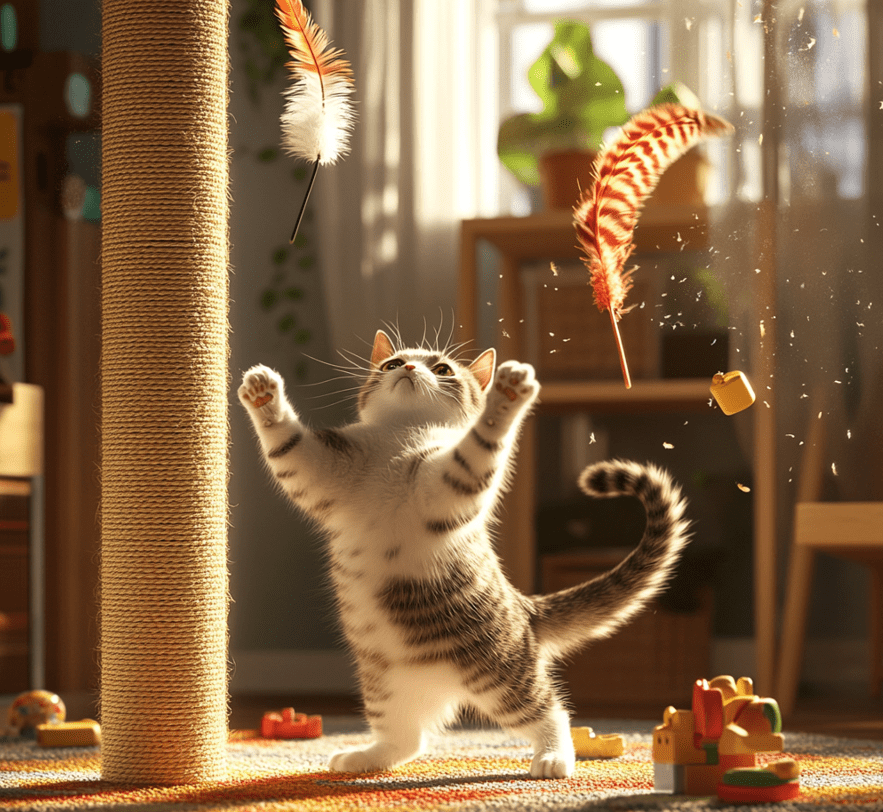
Moreover, supportive measures include the changes in the feed, which constitute the feeding program of overweight cats; another consistent component of weight control is exercise. Felines require stimulation and are active animals, and thus adopting a cat guarantees its owner that the animal will get physically involved in one way or the other if at all it is encouraged. Playtime can help your cat exercise as well as get her mind off of things during times when you’re gone.
First of all, you may begin with the use of toys that you can get from the local stores; these include feather wands, laser pointers, and treat-dispensing puzzles. Not only do these toys help to make your cat’s body get up and move, but they also help to entice their brains and keep them entertained! Play in some other portions of the day and gradually increase the energy expenditure in the play sessions.
It is important for indoor cats to get bored so a stimulating setup is important. Hills for the cats, toys such as paw toys, scratching posts, and windows with perches encourage the cats to climb, jump, and play. This can also be done within the house by placing some foods in different places for your cat to look for.
Monitoring Progress
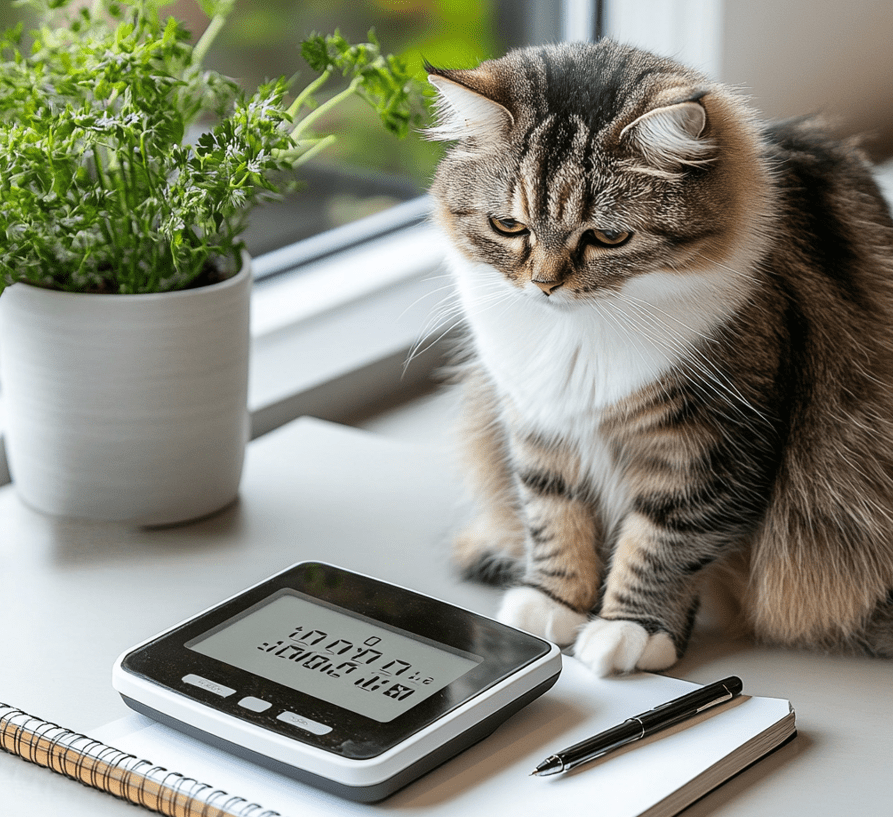
One of the key components of weight loss is the constant tracking of the process. Remember, cats: Check them with a baby scale occasionally (weekly), to look for changes in their weight, body condition, or appearance. Using a food diary will assist you in portion control, eating time, and consumption of any sweet items. If you do not note any advancement from your plan over time, you need to change your plan or seek advice from your vet.
Thus, it is crucial to constant one’s weight loss strategy because the latter should be a slow process. It is advisable to lose between 1-2 percent of total body weight in a week when gaining a trim figure. Rapid weight loss can predispose a lady to develop hepatic lipidosis (Fatty liver disease) which is lethal.
When to Seek Veterinary Help
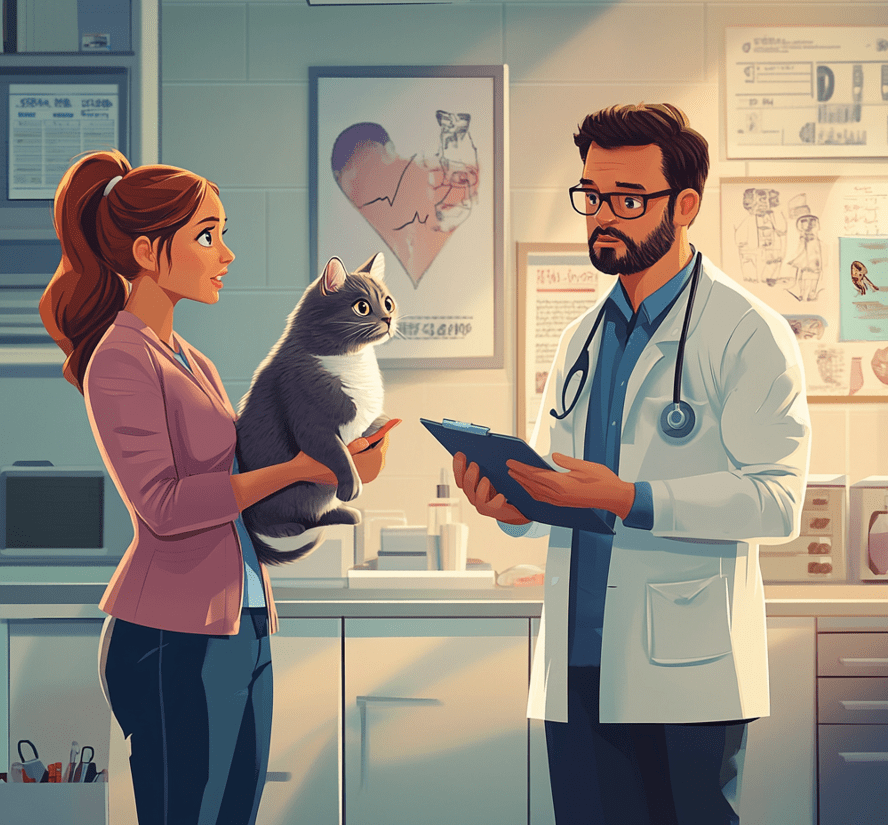
If your cat is not slimming down despite a controlled diet and exercise regime, consult your veterinarian. Sometimes obesity is associated with certain illnesses for example hypothyroidism, diabetes, and hyperlipidemia among others. Your vet can arrange for some tests to eliminate a medical reason for your cat’s obesity and may suggest specific diets that are prescribed or drugs for weight loss.
However, if your cat is having such symptoms like, is always sleepy or has not eaten for several hours, vomiting, or has a behavior change you need to take your cat to the vet. Such symptoms could be a sign of something far more sinister ailing the patient.
Weight Loss Strategies and Practical Tips
And even when you get your cat to the point that it is at an ideal weight, there is still more work to do. As for the weight loss process, they argued that it is a lifetime promise that constantly involves changing eating habits and exercising. These weigh-ins with your veterinarian can help to maintain your cat at their proper weight and help both you and your veterinarian monitor this. Perversely, the sequence should be repeated with controlled portions of high-quality food available for Flying, and normal play should be continued throughout to keep the cats active.
Maintaining and preventing the regaining of the lost weight is also quite important to them. Do not be tempted to refuel food portions or free feed like before to every animal that comes around. Here are some things to do if your cat starts demanding more food: Option One: Switch the kitty to reduced-fat and low-nutrient treats; Option Two: Spend time playing with the kitty instead of giving him or her more food.
Conclusion
Getting your cat to a healthy weight is a lifelong journey that can revolutionize their health, contentment, and longevity. In this article, the causes of obesity will be discussed, body condition scoring of cats along with dieting and exercise to achieve the feline’s ideal weight will also be discussed. Just remember that it may take time, and you must follow this routine religiously and be active when implementing it, and always involve the vet when necessary. Proper weight will therefore help your cat to have a better and more fulfilling life than it would have had with poor weight control.

